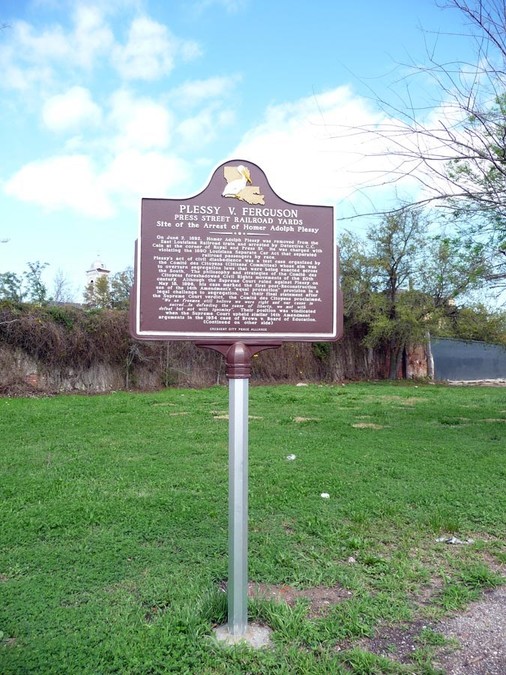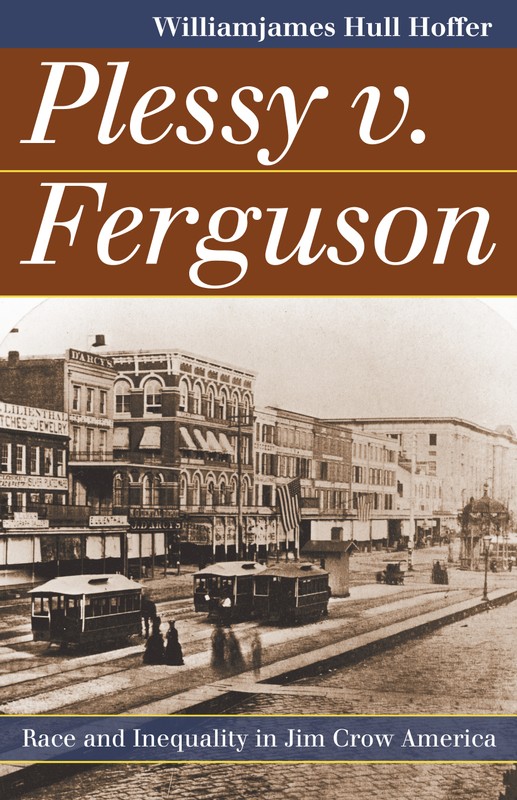Plessy vs. Ferguson Historical Marker
Introduction
Text-to-speech Audio
Images
Located on the corner of Royal and Press street, the Plessy vs. Ferguson historical marker can easily be missed. The train yard still remains nearby, and most certainly the implications of this infamous trial still resonate through society today.

For more information about the history and significance of the court case, consider this book by historian Williamjames Hull Hoffer.

Backstory and Context
Text-to-speech Audio
On June 7, 1892, a 30-year-old African-American man named Homer Plessy purchased a ticket and proceeded to board a segregated East Louisiana Railroad passenger train car at Press and Royal Streets in New Orleans. Rather than sitting in the designated “colored” section, Plessy in a section on the rail car designated to seat whites only. After a planned altercation with the train conductor, Plessy refused to give up his seat and move to the colored only car. The train was stopped and he was arrested immediately by a private detective hired for the planned cause. Plessy was arrested for breaking Louisiana's Separate Car Act of 1890 which required the segregation of rail passengers traveling on intrastate railroads.
The question the Supreme Court of the United States faced in 1896 was this: ‘Is Louisiana's law mandating racial segregation on its trains an unconstitutional infringement on both the privileges and immunities and the equal protection clauses of the Fourteenth Amendment?’ In a seven to one decision, the court found that the Louisiana state law to be within constitutional boundaries. The justices based their decision on the separate-but-equal doctrine, that separate facilities for Blacks and whites satisfied the Fourteenth Amendment so long as they were equal. (A doctrine that would not be overturned until Brown v. Board of Education in 1954.) Interestingly enough, the exact phrase, "separate but equal" was not part of the opinion. However, Justice Brown conceded that the while 14th amendment intended to establish absolute equality for the races before the law, that "in the nature of things it could not have been intended to abolish distinctions based upon color, or to enforce social, as distinguished from political equality, or a commingling of the two races unsatisfactory to either." This ruling goes as far to state segregation as not in itself constituting as unlawful discrimination.
This case sanctioned segregation in public accommodations throughout the country. It was not until Brown v. Board of Education in 1954 when this doctrine was overturned on the grounds that “separate but equal is inherently unequal”, especially in the context of public education.
Sources
Separate is Not Equal. Smithsonian Museum of American History. Accessed June 07, 2017. http://americanhistory.si.edu/brown/history/1-segregated/jim-crow.html.
